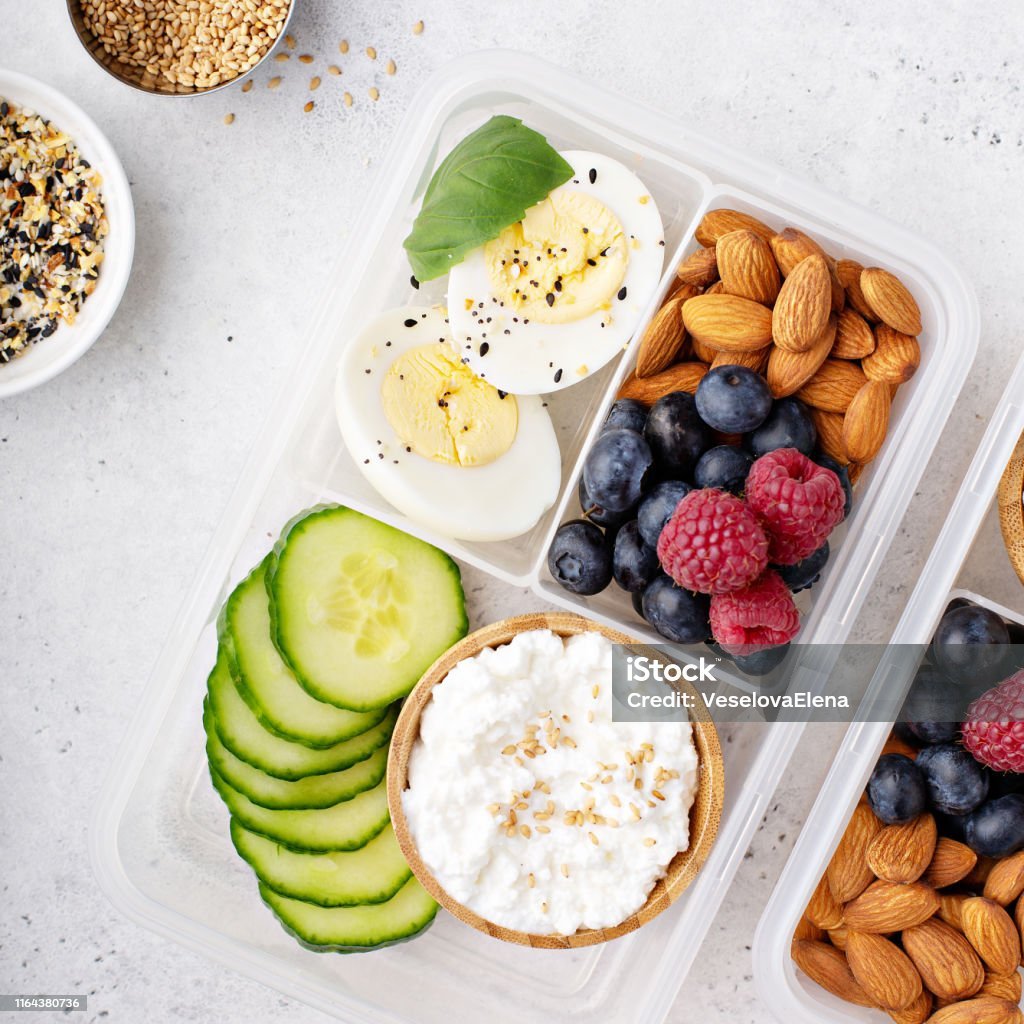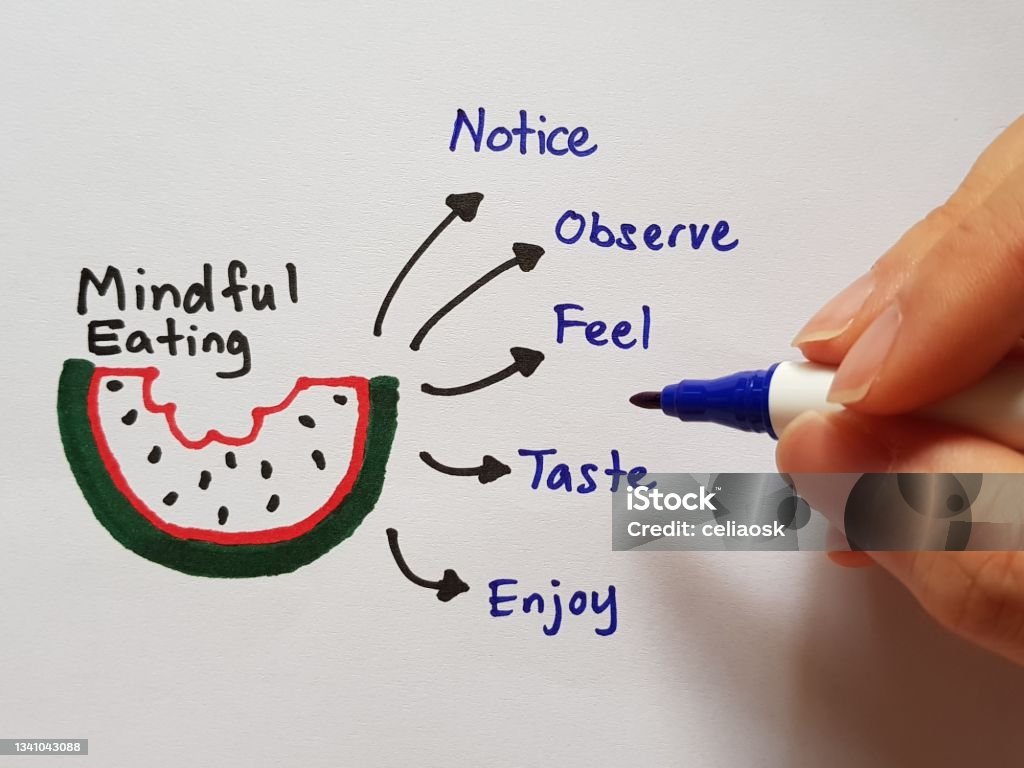1. Drink More Water: Hydration for Weight Loss

Water is not only a vital substance for life, but it is also needed on your weight loss journey. Here is why you should increase your water consumption as part of simple diet changes for weight loss:
Hydration and Hunger:
Staying Hydrated: Probably the most important benefit from drinking water is that it will help to stop your hunger. In those moments, when we reach for calorie-dense and usually unhealthy foods, what our body really is that it has been dehydrated. So staying hydrated will also help keep you from feeling hungry when you are really just thirsty and avoid unnecessary calorie consumption.
Calorie-Free Hydration:
Water is calorie-free, making it a crucial part of managing daily energy intake. However, calories can quickly add up with sugary beverages like soda, sweet tea, or juice. These drinks often contribute to weight gain due to their high sugar content. Think about how many unwanted calories you will cut out every day if water is the only thing you drink.
Boosting Metabolism:
Metabolism function activates temporarily when you drink cold water. In one study, metabolic rate increased by 24–30% for 60 minutes after drinking between16.9 and (500ml) of water. Studies also shown drinking cold water temporarily increases metabolism. In either version, the body needs more than enough energy to heat that water up — and calorie burning occurs. This process elevates metabolic rate by up to 30% for 30–40 minutes. But this is a small impact and if you are having two liters of water everyday, then weight loss equivalent to 96 calories can be expected.
Stimulating Digestion and Detoxing:
Healthy Digestion: If this is happening to you too, so just remember enough amount of water should be in taken for kayaking which is good when it comes to healthy digestion. Water — A dehydrated body leads to hard stools and constipation. When your body is well hydrated it can more easily pass through / be ‘excreted as waste’.
Improves Exercise Performance:
This impacts your ability to exercise as well, because without an adequate amount of fluid the food will build up in your system and not be expelled. That can lead to stomach cramping, and in some rarer instances even heat exhaustion at the gym. Your body simply can not stave off this effort and then do more gongfu inside the fitness center, consequently were really not shedding tons of extra fat.
Tips for Increasing Water Intake:
Here are some useful tips for increasing your water intake:
- Keep a bottle of water with you throughout the day and sip on it.
- Drink one glass of water before meals to suppress appetite and prevent overeating.
- For more flavor, add fresh lemon or lime juice to your water.
- Set reminders on your phone to regularly drink water.
- Drink one glass of water when you get up in the morning. You can also mix it with fresh produce crops such as lemons, oranges, cucumbers, and more.
- Drink water between alcoholic drinks.
- Try to drink a glass of water before you go to bed and when you wake up in the morning.
Drinking water is among the most straightforward strategies to help you reach your weight loss goals. Ensuring that you are taking sufficient water in your diet is quite beneficial. You can help support your weight loss goals when changes in eating habit and exercises are added to your diet. You can prevent yourself from exposing your body to dehydration by taking into account the above diet plan.
Incorporating Simple Diet Changes for Weight Loss like drinking more water can significantly impact your overall health and weight loss journey. By making these small but effective adjustments, you can achieve lasting results.
Read more: Popular Diets Guide: Explore Keto, Paleo, Vegan, And More
Read more: Fitness Motivation Tips: 10 Proven Strategies To Stay On Track
2. Eat More Fiber: The Key to Satiety and Weight Management

Few nutrients are as powerful and versatile as fiber when it comes to achieving and maintaining a healthy weight. Find out why you should increase your fiber intake as a key part of your simple diet changes for weight loss strategy.
What is Fiber?
Fiber is a type of carbohydrate found in plant-based foods that the body can’t digest or absorb. Rather, it passes relatively intact through your stomach, small intestine, colon, and out of your body, providing a range of health benefits throughout.
Fibers are the type of macronutrient that has countless advantages for the body and digestion system. These are the main reasons why it aids weight loss:
Promotes Satiety:
The primary reason for this benefit is that high-fiber foods add bulk to the diet but contain few calories. This bulk makes it seem like you’re consuming a larger portion while actually eating fewer calories. Fibers are indigestible, which helps curb hunger and prevent overeating, making it easier to shed extra pounds.
Slows Digestion and Absorption:
Foods with high levels of refined carbs or sugary snacks are quickly digested and absorbed in the body. However, this is not the case of those that are rich in fiber. High-fiber foods take longer to digest, stabilizing blood sugar by preventing surges and crashes from rapid digestion. This helps manage food cravings throughout the day, reducing unhealthy snacking between meals.
Regulates Appetite Hormones:
Research has shown that fiber intake helps produce hormones that regulate appetite. Ghrelin, the “hunger hormone,” is produced when the stomach is empty and promotes hunger. Leptin, the “satiety hormone,” is produced when the stomach is full and reduces hunger.
Supports Digestive Health:
Last but not least, fiber plays an important role in promoting health and maintaining the health of the digestive system. It helps to produce regular bowel movements and prevents constipation. Fiber also helps to add bulk to the stool and make it soft and easy for the intestines to pass through. People with healthy digestive systems, reduce the risks of bloating, gas, and unease and provide proper nutrition flow.
Sources of Fiber:
There are two types of dietary fibers, and they include the soluble, which dissolves in water in the food and makes it a gel-like substance while in the digestive system. The other type is the insoluble fiber that does not dissolve, and it adds bulk to the stool. The two types are important in the body, and they can be obtained from plant-based foods such as organic fruits and vegetables among other sources. Main sources of this nutrient include the following:
Fruits
• apples, pears, berries, oranges, bananas
Vegetables
• broccoli, Brussels sprouts, carrots, spinach, kale
Whole grains
• oats, barley, quinoa, brown rice, whole wheat bread
Legumes
• lentils, chickpeas, black beans, kidney beans, peas
Nuts and seeds
• almonds, chia seeds, flaxseeds, pumpkin seeds, walnuts
Tips for Incorporating Fiber in Diet:
The following guide may be helpful to individuals who may like to take the food that is organic, this includes:
Start your day with a high-fiber breakfast, that is an oatmeal topped with berries and nuts.
• Snack on fresh organic fruits, raw vegetables, or a handful of organic nuts instead of processed foods and snacks.
• Opt for whole grains like brown rice instead of white rice, and whole wheat pasta. Simply look out for GSG foods when shopping.
• Periodically add beans, lentils, and chickpeas to your soups, salads, and stir-fries.
• Gradually increase your intake and drink plenty of water to aid digestion.
Fibers are essential in the diet and increasing intake is a simple diet change for weight loss. They help you feel full longer, lower blood sugar levels, control hunger hormones, and feed friendly gut bacteria. Aim to include high-fiber organic foods in your daily diet.
Read more: Healthy Meal Prep: Tips And Recipes For Nutritious Eating
3. Focus on Portion Control: Mastering the Art of Mindful Eating

Portion control and appropriate serving size are two key ingredients in the recipe for successful weight loss. By making simple diet changes for weight loss such as monitoring the amount of food and focusing on appropriate portions, you can regulate the number of calories absorbed and work towards achieving your desired weight goal. Find out why portion control is important and how to make it an integral part of daily life as part of your simple diet changes for weight loss strategy.
Understanding Portion Distortion:
Many people find that the fast-paced, comfortable modern lifestyle makes it hard to avoid weight gain and obesity. Overeating isn’t the only issue; portion control is also a problem. Even when trying to eat healthily, people often don’t understand appropriate portion sizes and may cook or order more food than needed due to the many available choices.
The Importance of Mindful Eating:
The careful focus on the tastes and textures of meals is not new, but the term “mindful eating” is recent. Activities like consuming information during meals or having background distractions affect how people eat. Mindful eating requires focusing entirely on the eating process. It involves consuming food without judgment or distractions.
Benefits of Portion Control:
There are numerous advantages of portion control for people who are trying to lose weight or avoid a healthy weight gain, and here are some of them:
- Portion control helps with calorie management
- Eating average serving sizes is also beneficial for the digestion process, as one may reduce problems with the stomach.
- Smaller portions also help stabilize blood sugars, reducing hunger, and tiredness in the afternoon
- Finally, portion control is an effective method to achieve long-run results.
Practical Tips for Portion Control:
Smaller Dishes: Use smaller plates or bowls to make portions look larger, tricking your mind into feeling satisfied with less food.
Portion Measuring: Utilize measuring spoons, cups, or a food scale to accurately portion out grains, proteins, and fats.
Half-Plate Rule: Fill half your plate with non-starchy vegetables like zucchini, eggplant, and tomatoes to eat more volume without extra calories.
Snacking: Control your snack portions to avoid consuming unnecessary calories, even with healthy snacks.
Plate Method: Divide your plate into sections for proteins, carbs, and vegetables to ensure balanced meals.
Mindful Eating: Listen to your hunger and fullness cues, stopping when satisfied rather than overeating.
Portion control is a crucial simple diet change for weight loss. Aim for portions about the size of your fist, balanced with carbs, fats, and proteins. Being mindful of what and how much you eat helps regulate calorie intake and supports your weight loss goals.
4. Limit Processed Foods: Choosing Nutrient-Dense Options for Optimal Health
In the current world, people consume plenty of processed food daily. The ease of use and no need to stand in front of the stove attract both people with low incomes and the wealthy. Yet, there is absolutely no benefit to human health in the use of such food since it is more of food containing harmful additives. Try to stay away from it by following our simple yet effective tips. The right nutrition will thank you.
Understanding Processed Foods:
Processed foods are those that have undergone significant alterations from their original state through techniques such as refining, cooking, or adding preservatives, flavorings, and other additives. These foods are typically high in refined carbohydrates, unhealthy fats, sodium, and added sugars, while lacking essential nutrients like vitamins, minerals, and fiber.
Impact on Weight Gain:
Most of the time, processed foods are calorie-rich and nutritionally poor – it means that people consume them foods may eat an increased number of calories but gain very few nutrients. Eating these foods may result in gaining more weight, as they are high in calories, and this is one of the causes of such chronic diseases as type 2 diabetes, heart disease, and metabolic syndrome.
Hidden Calories and Additives:
Processed foods abound with hidden sources of calories, sugar, and unhealthy fat. Everything that a person can drink in this segment is usually either sugary or filled with various additives that change the product’s natural taste. Chocolates and cookies are not only sweet thanks to sugar but also have additional fats. Processed snacks are neither tasty nor good for human health because chips have no useful vitamins and are typically high in salt. Basically, all of those unhealthy substances become hidden additives that people consume when they eat processed food.
Strategies for Reducing Processed Foods:
In the debate between processed and whole foods, selecting nutrient-dense options is crucial for health, weight loss, and well-being. Here are some strategies for reducing processed foods and choosing healthier alternatives:
- Shop the Perimeter: Most grocery stores place fresh produce, lean proteins, and whole grains around the perimeter. Stick to these areas to limit processed food purchases and support lasting weight loss.
- Read Labels: When buying packaged foods, check ingredient lists for unhealthy fats, additives, and sugars. Nutrient-dense foods usually have minimal, recognizable ingredients. Be wary of foods with large quantities of hydrogenated fats.
- Cook from Scratch: Preparing meals at home using fresh, whole foods gives you control over ingredients and helps avoid artificial additives found in processed foods. This approach supports weight loss and healthier eating habits.
- Choose Whole Foods: Fruits, vegetables, whole grains, lean proteins, and healthy fats are rich in essential nutrients, fiber, and antioxidants. To avoid processed convenience foods, plan meals and snacks for the week.
These strategies can help you reduce processed food intake, achieve weight loss goals, and improve overall health.
Benefits of Limiting Processed Foods:
Limiting processed food intake is an effective way to maintain health and achieve weight loss goals. Benefits include:
- Improved Nutrient Intake: Whole foods are rich in essential nutrients like vitamins, minerals, fiber, and antioxidants, boosting overall health.
- Stabilized Blood Sugar: Whole foods are lower in refined carbs and added sugars, reducing blood sugar spikes and cravings for processed snacks.
- Enhanced Satiety: Nutrient-dense foods are more satisfying, preventing hunger shortly after meals and reducing overall calorie intake.
- Long-Term Weight Management: Choosing whole foods over processed options supports long-term weight maintenance and overall health.
Reducing processed foods and opting for nutrient-dense alternatives can help you lose weight and improve health. Even small simple diet changes for weight loss, like choosing whole food snacks, can make a significant difference.
Read more: High-Intensity Interval Training: The Ultimate HIIT Guide
5. Cook More Meals at Home: The Secret Ingredient to Healthy Eating and Weight Loss

In today’s fast-paced world, cooking meals at home may seem like a daunting task, but it’s one of the most powerful strategies for achieving and maintaining a healthy weight. By taking control of your food choices and preparation methods, you can make healthier, more nutritious meals that support your weight loss goals. Here’s why cooking more meals at home is essential for weight loss success:
Quality Control:
When you cook meals at home, you have complete control over the ingredients you use and the cooking methods you employ. This allows you to choose high-quality, nutrient-dense ingredients and avoid unhealthy additives, preservatives, and excessive amounts of salt, sugar, and unhealthy fats commonly found in restaurant meals and packaged foods.
Portion Management:
Eating out at restaurants often means oversized portions that can lead to excessive calorie intake and weight gain. When you cook at home, you can portion out your meals according to your nutritional needs and weight loss goals. By practicing portion control and serving reasonable-sized portions, you can better manage your calorie intake and support weight loss.
Nutritional Balance:
Cooking meals at home gives you the opportunity to create balanced, nutritious meals that provide essential nutrients your body needs to thrive. You can incorporate a variety of colorful fruits and vegetables, lean proteins, whole grains, and healthy fats into your meals, ensuring that you get a wide range of vitamins, minerals, fiber, and antioxidants to support overall health and weight loss.
Calorie Consciousness:
When you’re in control of the cooking process, you’re more likely to be mindful of the ingredients you use and the cooking methods you employ. This heightened awareness can help you make healthier choices and reduce calorie intake without sacrificing flavor or satisfaction. By choosing whole, minimally processed ingredients and preparing them in healthy ways, you can create delicious meals that support your weight loss goals.
Financial Savings:
Cooking meals at home is not only healthier but also more cost-effective than eating out or relying on pre-packaged convenience foods. By purchasing ingredients in bulk, planning meals ahead of time, and minimizing food waste, you can save money while eating nutritious, delicious meals that support your weight loss journey.
Family and Community Engagement:
Cooking meals at home can be a fun and rewarding activity to share with family members, friends, or roommates. By involving others in the cooking process, you can foster a sense of community and connection while promoting healthier eating habits for everyone involved. Cooking together also allows you to experiment with new recipes, share culinary skills, and create lasting memories around the dinner table.
Practical Tips for Cooking at Home:
Here are some practical strategies for incorporating more home-cooked meals into your routine:
- Plan Ahead: Take the time to plan your meals for the week ahead, including breakfast, lunch, dinner, and snacks. Write out a shopping list and purchase ingredients in advance to avoid last-minute trips to the store or resorting to takeout.
- Batch Cooking: Cook large batches of meals and portion them out into individual servings to enjoy throughout the week. This can save time and energy while ensuring you have nutritious meals readily available when hunger strikes.
- Simple and Quick Recipes: Look for simple, time-saving recipes that require minimal ingredients and preparation time. Focus on meals that can be prepared in 30 minutes or less, such as stir-fries, salads, soups, and one-pan dinners.
- Get Creative: Don’t be afraid to experiment with new ingredients, flavors, and cooking techniques. Cooking at home allows you to unleash your creativity in the kitchen and tailor meals to suit your preferences and dietary needs.
- Make it a Habit: Set aside dedicated time each week for meal planning, grocery shopping, and cooking. By making cooking at home a regular part of your routine, you’ll establish healthy habits that support your weight loss goals over the long term.
Cooking more meals at home is a simple yet powerful strategy for simple diet changes for weight loss. By taking control of your food choices, portion sizes, and cooking methods, you can create delicious, nutritious meals that support your weight loss goals while saving money and fostering a sense of community and connection with others. Start small, experiment with new recipes, and make cooking at home a priority in your daily life to reap the numerous benefits for your health and well-being through these simple diet changes for weight loss.
6. Increase Protein Intake: The Powerhouse Nutrient for Weight Loss and Muscle Health

When it comes to achieving your weight loss goals, protein is a nutrient you don’t want to overlook. Not only does it play a crucial role in supporting muscle growth and repair, but it also helps you feel full and satisfied, making it easier to stick to your calorie goals and shed excess pounds. Here’s why increasing your protein intake is essential for successful weight loss:
The Role of Protein:
Protein is one of the three macronutrients essential for overall health, alongside carbohydrates and fats. Unlike carbohydrates and fats, which primarily provide energy, protein is the building block of muscles, bones, skin, hair, and other tissues in the body. It’s made up of amino acids, which are necessary for repairing and building new cells and tissues.
Promotes Satiety:
One of the key benefits of protein is its ability to promote feelings of fullness and satiety. Compared to carbohydrates and fats, protein takes longer to digest and requires more energy to metabolize, leading to a greater feeling of fullness and reduced appetite. By including protein-rich foods in your meals and snacks, you can curb hunger and cravings, making it easier to stick to your weight loss goals.
Supports Muscle Health:
When you’re trying to lose weight, it’s essential to preserve lean muscle mass to maintain a healthy metabolism and prevent muscle loss. Protein plays a critical role in supporting muscle health by providing the amino acids necessary for muscle repair and growth. By increasing your protein intake, you can help preserve lean muscle mass while losing fat, resulting in a more toned and defined physique.
Boosts Metabolism:
Protein has a higher thermic effect of food (TEF) compared to carbohydrates and fats, meaning it requires more energy to digest and metabolize. As a result, consuming protein-rich foods can temporarily increase your metabolic rate, helping you burn more calories throughout the day. This can be particularly beneficial for weight loss, as it may contribute to a greater calorie deficit and more efficient fat burning.
Sources of Protein:
Protein can be found in a variety of foods, both animal and plant-based. Here are some excellent sources of protein to incorporate into your diet:
- Animal Sources: Lean meats (chicken, turkey, beef, pork), fish (salmon, tuna, trout), eggs, dairy products (Greek yogurt, cottage cheese, milk).
- Plant-Based Sources: Legumes (beans, lentils, chickpeas), tofu, tempeh, edamame, soy milk, seitan, quinoa, nuts and seeds (almonds, peanuts, chia seeds, hemp seeds).
Practical Tips for Increasing Protein Intake:
Here are some practical strategies for incorporating more protein into your diet:
- Prioritize Protein at Every Meal: Include a protein source in each meal and snack to keep you feeling full and satisfied throughout the day.
- Start Your Day with Protein: A protein-rich breakfast, like eggs, Greek yogurt, or protein smoothies, can prevent overeating later.
- Snack Smart: Choose protein-rich snacks like nuts, Greek yogurt, cottage cheese, or protein bars to curb cravings and hunger between meals.
- Leverage Meatless Proteins: Try plant-based protein sources like tofu, tempeh, legumes, and quinoa for variety and a reduced environmental footprint.
- Balance Your Plate: Fill half your plate with non-starchy vegetables, one-quarter with protein-rich foods, and one-quarter with whole grains or starchy vegetables for a balanced meal that supports weight loss and health.
Increasing protein intake is an effective strategy for simple diet changes for weight loss and overall health. By prioritizing protein-rich foods, you can promote fullness, preserve lean muscle, boost metabolism, and achieve weight loss goals. Experiment with different protein sources and balance your meals with nutrient-rich foods to implement these simple diet changes for weight loss and achieve optimal results.
7. Snack Smartly: Nourishing Your Body Between Meals

Snacking often gets a bad rap when it comes to weight loss, but when done mindfully and with nutritious options, it can actually support your goals by keeping hunger at bay, stabilizing blood sugar levels, and providing essential nutrients. Here’s how to snack smartly for weight loss success:
The Importance of Smart Snacking:
Smart snacking plays a crucial role in maintaining energy levels, preventing overeating at meals, and ensuring your body receives a steady supply of nutrients throughout the day. By choosing nutrient-dense snacks that satisfy hunger and provide a balance of macronutrients, you can avoid the pitfalls of mindless munching and support your weight loss efforts.
Components of a Smart Snack:
A balanced snack should contain a combination of protein, healthy fats, and fiber to provide sustained energy and promote feelings of fullness. Aim to include whole, minimally processed foods that nourish your body and satisfy your taste buds without excessive calories or added sugars. Here are some smart snack ideas to consider:
- Greek yogurt topped with berries and a sprinkle of nuts or seeds
- Apple slices with almond butter or peanut butter
- Vegetable sticks (carrots, celery, bell peppers) with hummus
- Hard-boiled eggs paired with whole grain crackers
- Cottage cheese with pineapple or peach slices
- Trail mix made with nuts, seeds, and dried fruit (in moderation)
- Whole grain toast with avocado and sliced tomato
- Air-popped popcorn seasoned with herbs and spices
- Edamame pods sprinkled with sea salt
- A small piece of cheese with whole grain crackers or apple slices
Practical Tips for Smart Snacking:
Here are some practical strategies for incorporating smart snacking into your daily routine:
- Plan Ahead: Plan your snacks in advance and pack them in portion-controlled containers to avoid mindless munching on less nutritious options.
- Mindful Portions: Be mindful of portion sizes when snacking. Avoid eating directly from the container; instead, portion snacks into a bowl or plate to control serving sizes.
- Hydrate First: Drink a glass of water before snacking to ensure you’re not mistaking thirst for hunger, as dehydration can feel like hunger.
- Listen to Your Body: Pay attention to hunger and fullness cues. Snack only when truly hungry, eat slowly, savor each bite, and stop when satisfied.
- Choose Whole Foods: Opt for whole, minimally processed foods. Avoid snacks high in added sugars, unhealthy fats, and artificial ingredients. Look for simple, recognizable ingredients and balanced macronutrients.
Smart snacking can support weight loss and nourish your body when done mindfully with nutritious options. Choose balanced snacks for sustained energy and hunger satisfaction, listen to your body’s cues, and make mindful choices for overall health and well-being.
8. Cut Back on Sugary Beverages: Refreshing Alternatives for Hydration and Weight Loss
Sugary beverages are a major contributor to excess calorie intake and weight gain in many people’s diets. From soda and fruit juices to sweetened coffee drinks and energy drinks, these liquid calories can add up quickly without providing any nutritional value. Here’s why it’s crucial to cut back on sugary beverages for weight loss success:
Hidden Calories and Added Sugars:
Sugary beverages are often loaded with hidden calories and added sugars, making them one of the biggest culprits behind weight gain and obesity. A single serving of soda or fruit juice can contain as much as 100-200 calories or more, mostly from refined sugars that offer little to no nutritional benefit. Consuming these liquid calories can easily push you over your daily calorie limit without providing any feelings of fullness or satisfaction.
Impact on Blood Sugar Levels:
Sugary beverages cause rapid spikes in blood sugar levels, followed by crashes that can leave you feeling tired, hungry, and irritable. These fluctuations in blood sugar can disrupt hunger and satiety signals, leading to increased cravings for more sugary and high-calorie foods. Over time, this cycle of blood sugar spikes and crashes can contribute to insulin resistance, weight gain, and metabolic dysfunction.
Empty Calories and Nutrient Deficiency:
Sugary beverages are often referred to as “empty calories” because they provide energy in the form of calories without any essential nutrients like vitamins, minerals, fiber, or protein. Consuming these empty calories can displace nutrient-dense foods from your diet, leading to deficiencies in key nutrients that are essential for overall health and well-being. Cutting back on sugary beverages allows you to prioritize nutrient-rich foods that support weight loss and optimal health.
Hydration and Weight Loss:
While staying hydrated is essential for overall health and well-being, not all beverages are created equal when it comes to hydration. Water is the best choice for hydration as it contains zero calories, sugar, or artificial additives. Therefore, by replacing sugary beverages with water or other low-calorie alternatives like herbal tea, sparkling water, or infused water, you can stay hydrated without sabotaging your weight loss goals.
Practical Tips for Cutting Back:
Here are some practical strategies for reducing your intake of sugary beverages and choosing healthier alternatives:
- Read Labels: Check nutrition labels and avoid beverages with added sugars, high-fructose corn syrup, or artificial sweeteners. Choose options with zero or low calories and no added sugars.
- Gradual Reduction: Reduce sugary beverages gradually. Start by replacing one sugary drink per day with a healthier alternative and increase over time.
- Flavor Naturally: Add fresh fruit slices, herbs, or citrus to water for a naturally sweetened, refreshing option without added sugars.
- Portion Control: If you indulge in a sugary drink, choose smaller serving sizes or share with a friend to control portions.
- Make Water Accessible: Carry a reusable water bottle to stay hydrated and avoid sugary beverages when you’re thirsty.
Cutting back on sugary beverages is a simple yet powerful strategy for supporting weight loss and improving overall health. By choosing hydrating alternatives like water, herbal tea, and infused water instead of liquid calories, you can reduce overall calorie intake, stabilize blood sugar levels, and prioritize nutrient-rich foods that support weight loss and long-term well-being.
9. Eat Mindfully: Nourishing Your Body and Soul with Intention

IIn our fast-paced world, mindless eating is common. Mindful eating, a simple diet change for weight loss, involves being fully present, paying attention to hunger and fullness cues, and enjoying the sensory experience of eating. This practice leads to healthier choices and better weight management. Here’s why eating mindfully is essential for weight loss success:
Tuning into Hunger and Fullness:
Mindful eating helps us listen to our hunger and fullness cues, eating only when hungry and stopping when satisfied. This prevents overeating, regulates food intake, and supports weight loss.
Savoring the Experience:
Mindful eating engages all senses to savor food’s sight, smell, taste, texture, and sound. This enhances satisfaction and enjoyment, reduces calorie intake, and helps prevent overeating due to boredom or emotions.
Reducing Emotional Eating:
Mindful eating helps us recognize emotional triggers like stress, boredom, sadness, or loneliness. Instead of using food to cope, we can practice relaxation techniques, enjoy activities, or seek support from friends and loved ones. By addressing these triggers, we can break unhealthy eating patterns and support our weight loss goals.
Enhancing Digestion:
Eating mindfully involves slowing down and chewing our food thoroughly, which aids digestion and nutrient absorption. When we rush through meals or eat on the go, we are more likely to experience digestive discomfort like bloating, gas, and indigestion. By taking the time to eat slowly and mindfully, we can improve digestion, reduce discomfort, and support overall gastrointestinal health.
Practical Tips for Eating Mindfully:
Here are some practical strategies for incorporating mindful eating into your daily routine:
- Slow Down: Take your time to eat meals slowly and mindfully, savoring each bite and chewing thoroughly before swallowing.
- Eliminate Distractions: Turn off the TV, put away devices, and focus on the sensory experience of eating. Use All Your Senses: Appreciate the visual appeal, aroma, taste, texture, and sound of each bite.
- Pay Attention to Hunger Cues: Eat only when truly hungry by listening to your body’s hunger and fullness signals.
- Practice Gratitude: Express gratitude before each meal for the nourishing food and the opportunity to care for your body and soul.
Eating mindfully is a powerful practice that can transform your relationship with food and support your weight loss goals. By listening to your body’s hunger and fullness cues, savoring your food, and reducing emotional eating, you can make healthier choices and prevent overeating. Incorporate mindful eating into your routine as one of the simple diet changes for weight loss for improved health, happiness, and weight loss.
10. Get Adequate Sleep: Unlocking the Power of Rest for Weight Loss and Well-Being

Sleep is commonly dismissed as something essential for weight reduction, but it actually does play a vital role in managing craving levels alongside metabolism and energy. Proper sleep is important for general health and wellness, it also helps you stay comfortable during the weight reduction process. One of them is that simple diet changes for weight loss — like getting enough sleep– are crucial to success cutting calories. · And why focusing on sleep is key to reaching your weight loss goals:
Hunger Hormones Controlled:
Proper regulation of hunger hormones such as ghrelin and leptin requires appropriate amounts of sleep. Ghrelin is an appetite increaser, but leptin tells the body you have had enough (fullness and satiety) When you get too little sleep, your ghrelin levels rise and your leptin levels fall — something that can also happen when you’re stressed out or hungry after working out in the gym. This can be more challenging when you are looking to lose weight and lead to overeating leading in gaining extra kilos.
Balanced Metabolism:
Your metabolism (the way your body converts what you eat and drink into energy) also depends on sleep. Sleep deprivation slows your metabolism, so it burns calories less efficiently. This can eventually lead to increased body fat, and metabolic disorders. Get some shut-eye —We need sleep to keep our metabolism normal supports the body’s ability assist in weight regulation and overall metabolic health.
Besides playing a role in increasing energy levels, certain supplements can also be used to boost physical activity.
Last thought
Finally, always consider that losing weight is not a mere compliance of diet or exercise. It is adopting habits and behaviors that leads people to a healthier, fuller life. In order to reach and maintain your weight loss goals, I propose these ten tactics – drink escalating water levels; look at fiber diet from an entirely fresh perspective; regulate what most you eat along with how often it is consumed (they turn out catching up…), prioritizing slumber over everything else.
Be patient, consistent and compassionate to yourself during your weight loss. Not only this, but be gentle with yourself as you go along; cherish your achievements and work through them in case of any failures. Remember — each small change you make toward your life is a win. Through your hard work and determination, you can find long term success.
My first and greatest piece of adviceIs listen to your body, take care yourself above all. Eat well, exercise in ways that feel good and rest your body. Trust in the process of realizing a better us. You have the ability to change your life for good, and you can start having a better life from today also.
Cheers to your health and an transformation, that you may find so much happiness & fulfillment throughout your weight loss & healthy living journey!
Read more: Healthy Meal Prep: Tips And Recipes For Nutritious Eating
Refferance
Harvard T.H. Chan School of Public Health – The Nutrition Source: Healthy Weight
- Harvard T.H. Chan School of Public Health provides evidence-based information on healthy weight management, including practical tips on diet and lifestyle changes.
Mayo Clinic – Weight Loss: 6 Strategies for Success
- Mayo Clinic offers insights into effective weight loss strategies and how to implement simple diet changes to achieve your goals.
National Institute of Diabetes and Digestive and Kidney Diseases (NIDDK) – Weight Loss
- NIDDK discusses various approaches to weight loss, including dietary adjustments and lifestyle modifications.
American Heart Association – Healthy Eating for Weight Loss
- American Heart Association provides guidelines on healthy eating habits that support weight loss and overall health.
WebMD – Weight Loss Diet and Exercise Tips
- WebMD features expert advice on weight loss, including simple dietary changes and exercise tips for effective weight management.

